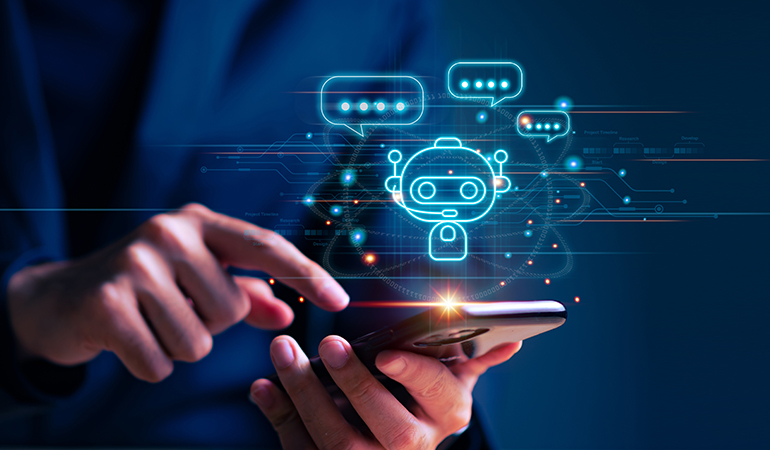How Artificial Intelligence is Reshaping Language Learning in the Modern Era?

In the digital age, the way we approach education has transformed dramatically. From online classes to interactive apps, the boundaries of traditional learning are being replaced by flexible, student-centered technologies. Among the most exciting developments is how artificial intelligence is revolutionizing language learning, opening up new possibilities for learners around the world.
One of the most notable advances is the integration of AI for language learning, which offers a highly personalized and adaptive experience. These AI systems analyze learners’ strengths, weaknesses, and progress in real-time, allowing for dynamic content delivery that evolves with the user’s needs. Instead of a one-size-fits-all approach, students receive tailored instruction and feedback that make their journey more efficient and engaging.
From Repetition to Real Conversation
For decades, language instruction heavily relied on rote memorization, grammar drills, and vocabulary lists. While these methods have their place, they often lack real-world application and can quickly become monotonous. AI changes that by offering learners the opportunity to engage in simulated conversations, contextual learning, and even voice-based interactions.
AI-powered chatbots can mimic real conversational partners, giving learners the chance to practice speaking in a safe, low-pressure environment. These bots can detect pronunciation errors, provide grammar suggestions, and help improve fluency—all without the fear of judgment that some students experience in classroom settings.
Adaptive Learning Paths
One of the most impressive features of AI in language education is its ability to create adaptive learning paths. By tracking user behavior and performance, AI systems can modify lessons on the fly. If a student struggles with verb conjugation but excels at vocabulary retention, the software adjusts future lessons to emphasize verbs while continuing to reinforce vocabulary through application.
This level of personalization makes learning more efficient and helps students stay motivated. It also allows for differentiated instruction that meets diverse learning styles—something that can be challenging for human teachers to manage in group settings.
Breaking Down Language Barriers
Language barriers are not just an issue for travelers; they can be a major obstacle in global business, education, and diplomacy. AI tools help bridge these gaps by offering real-time translation services and multilingual communication platforms. Whether you’re collaborating on a project with someone halfway across the globe or learning a new language to expand your career opportunities, AI provides seamless assistance.
These technologies also make it easier for non-native speakers to integrate into new communities. With mobile apps and wearables equipped with AI language capabilities, newcomers can navigate unfamiliar environments, access essential services, and build social connections more easily.
Cultural Context Matters
Effective language learning goes beyond grammar and vocabulary. Understanding cultural context is crucial for fluency and respectful communication. Some AI platforms are beginning to incorporate cultural lessons into their language modules. For instance, learners might be introduced to common idioms, etiquette, holidays, and historical references relevant to the language they’re studying.
By including this layer of depth, AI enhances both the linguistic and social competencies of learners, preparing them for real interactions in multicultural settings.
Cost-Effective and Accessible
Traditional language courses, especially those with experienced instructors or immersive components, can be expensive. AI-driven platforms, on the other hand, offer a more affordable solution while maintaining a high-quality learning experience. These tools are also accessible to users from different socioeconomic backgrounds and locations, making language education more inclusive.
Students who may not have access to native speakers or formal instruction can now use AI tools to simulate immersion and receive instant feedback. This democratization of learning resources is one of the most important benefits of AI in education.
Human Teachers Still Matter
Despite all the advancements, it’s important to note that AI is not a replacement for human teachers. Instead, it should be seen as a supplement that enhances their abilities. Teachers can use AI-generated data to better understand their students’ progress, identify areas of concern, and adjust their instruction accordingly.
Moreover, human interaction brings a level of empathy, nuance, and motivation that machines cannot replicate. The ideal learning environment combines the best of both worlds: AI’s analytical power and personalization with human insight and emotional intelligence.
Future Prospects and Innovation
As AI technology continues to evolve, the possibilities for language learning are expanding. Future language learning applications may include augmented reality environments where learners can interact with virtual natives, emotionally responsive AI tutors that adjust their tone and approach based on student mood, and even brain-computer interfaces that adapt content based on cognitive feedback.
We’re also likely to see more collaborations between language experts and AI developers, ensuring that these tools are pedagogically sound and aligned with the latest research in linguistics and cognitive science.
Final Thoughts
Language is more than just a set of rules—it’s a living, breathing means of connecting with others. Artificial intelligence, when thoughtfully applied, brings that connection closer and makes learning more meaningful. From adaptive lessons to real-time translation, AI is not only transforming how we learn languages but also breaking down the barriers that separate us.



